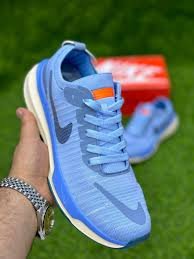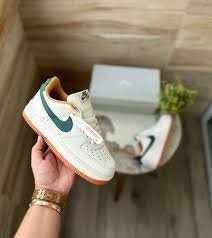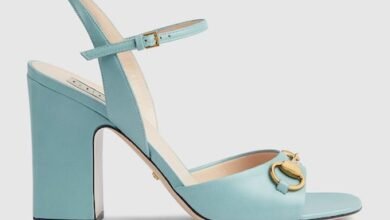The Ultimate Guide to Nike Shoes: Comfort, Style, and Performance in Every Step

Introduction: Why Nike Shoes Are More Than Just Footwear
Nike shoes are more than a wardrobe staple—they’re a statement. From athletic fields to fashion runways, and even office casual days, Nike has carved out a unique space in the global footwear scene. The swoosh isn’t just a logo; it’s a symbol of innovation, performance, and lifestyle. Whether you’re a sneakerhead or just looking for comfy kicks, Nike offers something for everyone.
The company has been around since the 1960s, and it continues to dominate both the sports and casual wear markets. One reason for this success? Nike knows how to evolve. From Air Jordans to Flyknit technology, they keep pushing the envelope in both design and function. And with the growing influence of streetwear culture, Nike has found a sweet spot between sport and style that few brands can match.
What really sets Nike apart is their ability to blend technology with aesthetics. You’re not just buying a shoe—you’re buying into a legacy. And in this article, we’ll walk you through exactly why Nike shoes deserve a place in your closet.
The History and Evolution of Nike Shoes

To appreciate Nike shoes, it helps to know where they came from. The company started as Blue Ribbon Sports in 1964, distributing shoes for the Japanese brand Onitsuka Tiger (now known as ASICS). It wasn’t until 1971 that the Nike name and swoosh logo were introduced, along with their first self-designed shoe—the Nike Cortez.
As years went on, Nike expanded its offerings and made history with releases like the Air Jordan line in 1984, revolutionizing both basketball and sneaker culture. Designed for Michael Jordan, this line skyrocketed Nike’s brand visibility and created an entirely new genre: the performance-lifestyle hybrid.
Over the decades, Nike didn’t just rely on athlete endorsements; they invested heavily in research and development. Shoes like the Nike Air Max and Nike Shox were born from innovation and rigorous performance testing. Each design wasn’t just about looks—it had a purpose, from enhancing speed to providing better cushioning or breathability.
And let’s not forget their cultural impact. Nike shoes have transcended athletics to become icons in music, fashion, and even politics. From Kanye West rocking Air Yeezys (before his Adidas deal) to Barack Obama wearing custom Jordans, Nike has become a symbol of cultural relevance.
Types of Nike Shoes and Who They’re For
One of the best things about Nike is that they offer a shoe for virtually every type of person. Whether you’re a runner, a basketball player, or just someone who wants to look fresh, there’s a Nike shoe tailored to your needs.
Nike Running Shoes
For those who hit the pavement or treadmill often, Nike’s running shoes like the Nike ZoomX Vaporfly NEXT% or Nike Pegasus series offer top-tier performance. These shoes are lightweight, highly responsive, and built to help you run longer and faster. The cushioning and arch support are particularly beneficial for those with long-distance goals.
Nike Basketball Shoes
From the iconic Air Jordans to the LeBron and KD lines, Nike’s basketball shoes offer excellent ankle support, shock absorption, and grip. Whether you’re hooping at a pro level or in a local gym, these shoes give you the edge you need on the court.
Nike Lifestyle Shoes
Want to keep it casual? Shoes like the Air Force 1, Nike Blazer, and Nike Dunk are perfect for everyday wear. These sneakers combine classic designs with modern flair and are loved for their comfort and versatility. Perfect with jeans, joggers, or even dresses, these kicks are as fashionable as they are functional.
Nike Training Shoes
Cross-training, HIIT workouts, or gym sessions call for a different kind of footwear. Nike Metcons and Free Trainers offer multi-directional support and stability, perfect for those doing dynamic movements. These are great all-rounders for people serious about their fitness goals.
What Makes Nike Shoes So Popular?
Nike’s popularity isn’t just a result of celebrity endorsements or slick marketing—it’s also grounded in quality. Their shoes consistently perform well in tests for durability, comfort, and innovation. They’re not just trendy; they’re tried and tested.
One major factor is their consistent investment in innovation and technology. Nike Air units, Flyknit uppers, React foam, and Zoom cushioning are all proprietary technologies designed to improve the user experience. These aren’t gimmicks; they actually make a difference in performance.
Then there’s the design element. Nike has a knack for aesthetics. Their shoes are sleek, modern, and often feature bold colorways that make a statement. From limited edition collabs to seasonal drops, there’s always something new to look forward to. This strategy keeps fans engaged and fuels a thriving resale market, particularly for rare editions.
Let’s also not overlook accessibility. Nike shoes are available globally and cater to a wide range of price points. Whether you’re spending $60 or $300, you’re likely getting good value for your money. Their user-friendly website, retail stores, and partnerships with other sellers make them incredibly easy to shop.
Tips for Choosing the Right Nike Shoe
With so many options, it can be overwhelming to pick the right pair. Here are a few tips to help narrow down your decision:
Know Your Purpose
Are you running, walking, weightlifting, or just going out for brunch? Define your primary activity. Running shoes prioritize cushioning and flexibility, while training shoes focus on support and stability.
Understand Your Foot Type
Nike offers shoes for various arch types and foot shapes. For example, flat-footed individuals may benefit from extra support found in models like the Nike Structure, whereas neutral runners might prefer the Nike Pegasus.
Try Before You Buy
If possible, always try them on in-store. Fit can vary between models. What’s true to size in one design might feel snug or loose in another. And if you’re shopping online, make sure to check the return policy just in case.
Consider the Tech Features
From FlyEase for easy on/off access to Nike React for responsive cushioning, it helps to know what the shoe offers beyond its looks. These tech features often enhance the overall experience, especially if you’re using them for physical activity.
Nike Shoes and Sustainability: Stepping Toward a Greener Future
In recent years, Nike has made major strides in becoming a more sustainable brand. Their “Move to Zero” campaign focuses on reducing carbon emissions and eliminating waste. Many of their newer shoes feature recycled materials, including yarn made from plastic bottles and rubber from old shoes.
Models like the Nike Space Hippie and Nike Air Max Terrascape are excellent examples of how style and sustainability can go hand in hand. Not only do they look great, but they also have a smaller environmental footprint. It’s a win-win for conscious consumers.
Nike also offers a recycling program where you can return worn-out shoes, which they use to create new products or materials. If you care about the planet and want your purchases to reflect that, Nike gives you plenty of options to shop responsibly.
Final Thoughts: Should You Buy Nike Shoes?
If you’re on the fence about buying Nike shoes, let’s make it simple—yes, you should. Whether you’re an athlete, a fashion lover, or someone who just wants comfortable everyday footwear, Nike delivers on all fronts. Their shoes are built with both purpose and personality in mind, making them a worthy investment.
From iconic legacy models to cutting-edge performance shoes, there’s a Nike pair for every foot, style, and activity. With thoughtful design, reliable quality, and a pulse on cultural trends, Nike remains at the top of the footwear game for good reason.
So, lace up and just do it—because with Nike, every step counts.



